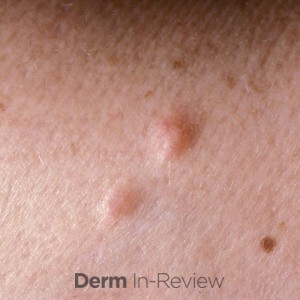On this Mnemonic Monday, we challenge you to remember the mutation and clinical manifestations of REED syndrome, also known as familial leiomyomatosis.
Mnemonic:
COME READ MY LATEST BOOK ABOUT RATS ON A FARM
Read (aka REED) syndrome
Leiomyomatosis (uterine and cutaneous)
RCC (type II papillary renal cell carcinoma)
Fumarate hydratase (autosomal dominant mutation)
This mnemonic refers to REED syndrome, including its associated mutation and clinical manifestations. REED syndrome is characterized by an autosomal dominant mutation in fumarate hydratase. Its clinical manifestations include cutaneous and uterine leiomyomatosis as well as type II papillary renal cell carcinoma.
Click HERE to download or print your mnemonic card.
Study More!
Need a refresher on REED syndrome? Check out page 232 of your 2020 Derm In-Review Study Guide.
Don’t have a copy? Sign up for Derm In-Review and download the digital version here.
Further Reading
Check out the following case report published in the Journal of Drugs in Dermatology (JDD):
Cutaneous Clues to Renal Cell Carcinoma: Hereditary Leiomyomatosis and Renal Cell Carcinoma
ABSTRACT
JDD authors present a case of a 33-year-old female who was incidentally found to have cutaneous leiomyomata during a routine skin examination. Further history revealed that she also suffered from uterine fibroids and that her mother had died at an early age from renal cell carcinoma. This case serves as a reminder of the often-subtle cutaneous clues, as well as the importance of a multidisciplinary approach, for early diagnosis of potentially fatal conditions.
J Drugs Dermatol. 2013;12(5):578-579.
Read the full article here.
Test your knowledge!
A patient presents with these lesions. If multiple are found, which of the following should be screened for?
A: Gastric
B: Lung
C: Breast
D: Renal
E: Colon
To find out the correct answer and read the explanation, click here.
Did you enjoy this mnemonic? You can find more here.
Brought to you by our brand partner Derm In-Review. A product of SanovaWorks.

